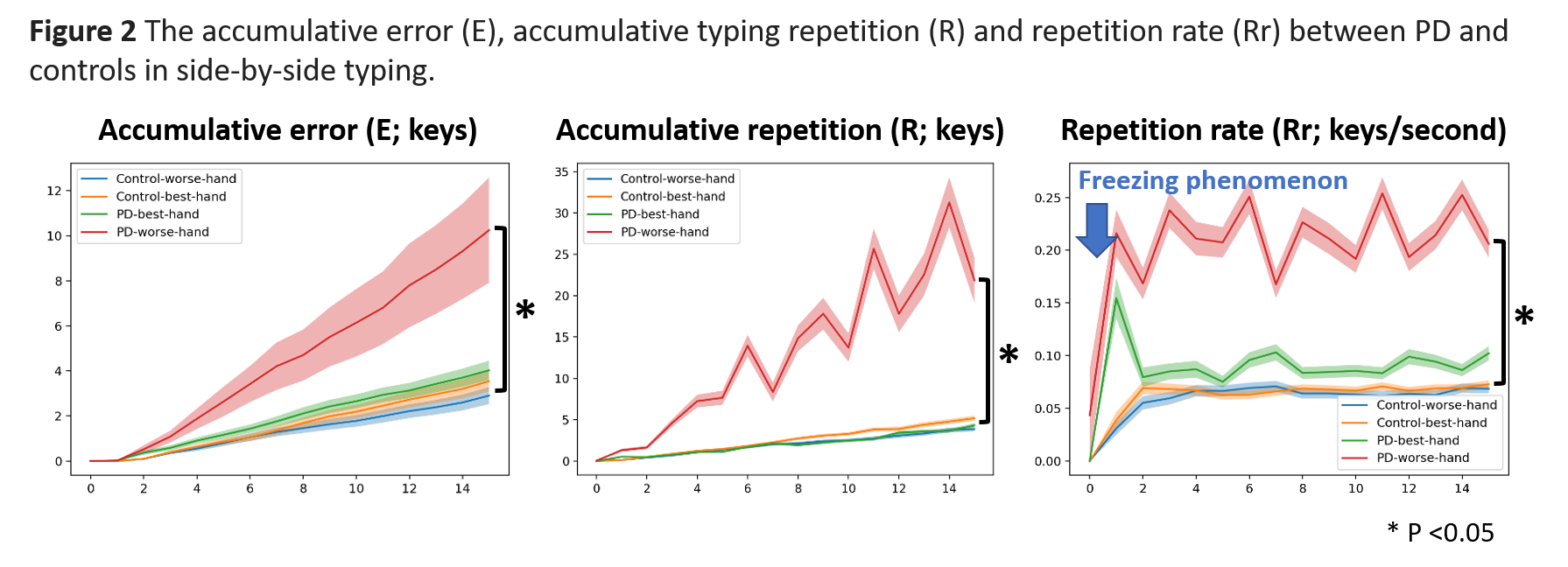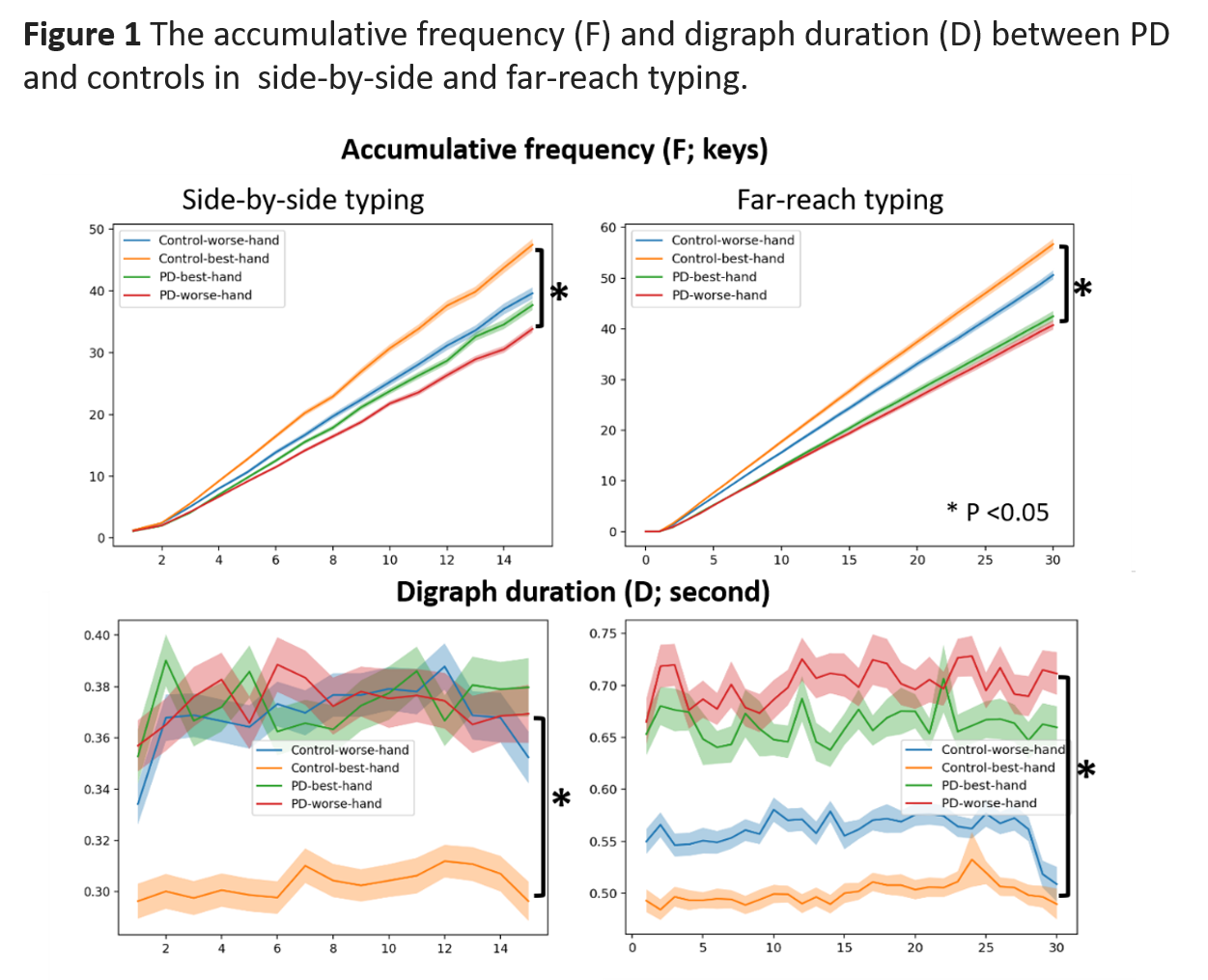Category: Parkinson's Disease: Neurophysiology
Objective: To explore the characteristics of bradykinesia in PD via a keyboard typing test.
Background: Bradykinesia is one of the cardinal symptoms in Parkinson’s disease (PD). Quantitative analysis of finger dexterity could provide insights into the characteristics of bradykinesia and enhance our knowledge on this phenomenon experienced by PD patients.
Method: 48 early stage PD patients (H&Y stage 1.9 (0.6)) and 49 age-matched controls were recruited and finger dexterity was assessed using an in-house typing kit to determine typing performance. Side-by-side typing was evaluated to ascertain rapid alternating movements of the distal limb, whilst far-reach typing was determined to assess the proximal part. Outcomes including accumulative frequency (F; keys), typing velocity (V; keys/s), accumulative typing error (Er; keys), error rate (Er; keys/s), accumulative repetition of typing keys (R; keys), repetition rate (Rr; keys/s) and digraph duration (D; s) were calculated and compared between groups. A machine-learning-based approach was utilised to distinguish PD from controls.
Results: PD patients (worst hand) had significantly lower accumulative frequency and typing velocity than controls in both side-by-side (p=0.001, <0.001) and far-reach typing (p<0.001, <0.001). Digraph duration and digraph rate were significantly higher in PD affected hand than controls (side-by-side ;p=0.03, 0.02 and far-reach typing; p<0.001, <0.001 respectively). These results confirmed a declining frequency and amplitude according to a definition of bradykinesia. Accumulative typing error, error rate, accumulative repetition of typing keys and repetition rate were significantly greater in PD affected hand compared to controls only in side-by-side typing (p=0.007, <0.001, 0.008, 0.01 respectively). The repetition rate was steep during the initiation of typing in PD, suggestive of freezing. A predictive model using the F, Er and D of typing performance had an accuracy of 87% to distinguish between groups.
Conclusion: Our study demonstrated the characteristics of bradykinesia in PD manifested as a decline in frequency and amplitude, progressive error of movement and freezing of initiation of movement during repetitive alternating movements of upper limbs. Imprecise programming and non-gait related freezing could be additional unique phenomena of bradykinesia in PD.
To cite this abstract in AMA style:
P. Panyakaew, K. Duangjino, T. Ploensin, K. Piromsopa, R. Bhidayasiri. The Many Faces of Bradykinesia in Parkinson’s Disease : The Quantitative Analysis from A Keyboard Typing Test [abstract]. Mov Disord. 2020; 35 (suppl 1). https://www.mdsabstracts.org/abstract/the-many-faces-of-bradykinesia-in-parkinsons-disease-the-quantitative-analysis-from-a-keyboard-typing-test/. Accessed December 6, 2025.« Back to MDS Virtual Congress 2020
MDS Abstracts - https://www.mdsabstracts.org/abstract/the-many-faces-of-bradykinesia-in-parkinsons-disease-the-quantitative-analysis-from-a-keyboard-typing-test/


